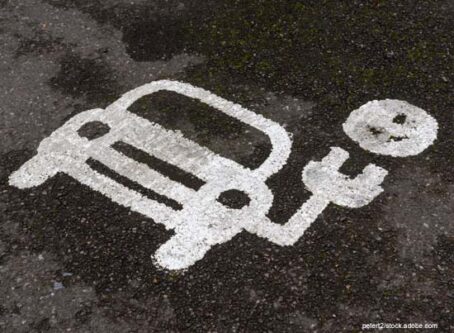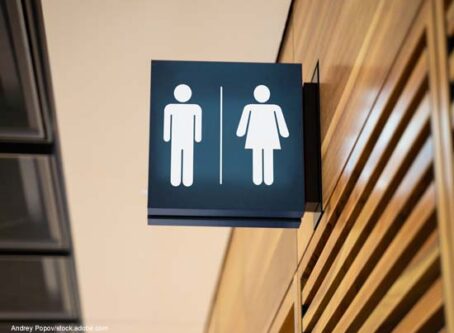Lane splitting rules pursued in multiple statehouses
One trending topic at statehouses across the country is the legalization of driving motorcycles between traffic lanes in certain circumstances. The practice is commonly referred to as lane splitting or lane filtering.
Advocates say that lane splitting is beneficial because it saves motorcyclists time and fuel. They say the practice also reduces the risk for getting rear-ended in stop-and-go traffic.
Some people in the trucking industry have raised concerns about motorcyclists attempting the maneuver around large vehicles.
Arizona
Months after enacting a law to permit lane splitting, one Arizona bill calls for abandoning the rule.
As of Sept. 24, motorcyclists in the state traveling on congested highways are allowed to move between vehicles up to an intersection.
The law permits lane splitting to be completed on roadways with two lanes of traffic in the same direction with a speed limit up to 45 mph. Vehicles must be at a complete stop.
Additionally, motorcycles can only travel up to 15 mph to complete the maneuver.
Fresh off election to the state Senate, first-term Sen. Justine Wadsack, R-Tucson, is behind an effort to nix the new law.
SB1412 would remove the lane splitting language from statute.
In addition to Arizona, three more states permit lane splitting.
California
In 2016, California became the first state to adopt a rule to allow lane splitting with motorcycles.
Previously, state law neither permitted nor forbade the practice of riding motorcycles between rows of stopped or slowed traffic.
The Golden State’s rule allows motorcycles to travel between lanes at speeds up to 10 mph, provided that traffic is moving at 30 mph or less.
The California Highway Patrol offers tips for motorcyclists on how to safely perform the maneuver.
Utah followed suit in 2019. The 4-year-old law permits motorcycles to move between stopped vehicles on roads with a posted speed limit of 45 mph or less.
Motorcyclists are allowed to travel 15 mph or less on roadways with two adjacent lanes to split travel lanes when traffic is stopped.
The lane splitting rule also permits motorcyclists to move to the front of a traffic light. Motorcyclists can only move to the front when vehicles are stopped.
As originally signed into law, the rule included a July 2022 sunset date. Legislation enacted last year extended the sunset date by five years to 2027.
The extension was recommended by the Utah Department of Public Safety to gather more data.
The state of Montana legalized lane splitting in 2021. The maneuver is permitted when “on a road with lanes wide enough to pass safely.”
Two-wheeled motorcycles are permitted to overtake stopped or slow-moving traffic at a speed up to 20 mph. Filtering between lanes of stopped traffic traveling in the same direction is permitted as conditions permit.
The topic continues to receive attention at statehouses elsewhere.
Colorado
If one Colorado state lawmaker gets his way, lane splitting could soon be legal in the state.
Rep. Ron Weinberg, R-Loveland, has introduced a bill that would require the Colorado Department of Transportation to work with the Colorado State Patrol to do a feasibility study of permitting lane splitting.
A fiscal analysis shows the study would have a $75,000 price tag.
Results would be reported to the Legislature’s transportation committees by the end of the year.
HB1059 is in the Senate Transportation, Housing and Local Government Committee.
Missouri
A Missouri bill distinguishes between lane filtering and lane splitting.
Sponsored by Rep. Doug Mann, D-Columbia, the bill would put into statute that lane filtering is allowed under certain circumstances and that lane splitting is prohibited.
HB1046 defines lane filtering as driving a motorcycle between rows of stopped or slow-moving vehicles traveling in the same direction on divided or undivided roadways.
Lane splitting is defined as driving a motorcycle between rows of fast-moving vehicles traveling in the same direction on divided or undivided roadways.
The bill would permit lane filtering when the motorcycle is traveling up to 10 mph over the speed of traffic, and not more than 25 mph.
Additionally, any vehicle operator who intentionally impedes or attempts to prevent a motorcyclist from performing the maneuver could be ticketed.
Oregon
The Oregon version would allow lane filtering under certain circumstances.
Sponsored by Sen. Michael Dembrow, D-Portland, SB442 would allow the practice on roadways with posted speed limits 50 mph or higher. Motorcycles would only be permitted to take the action when traffic is stopped or moving slower than 10 mph. Riders would only be permitted to travel 10 mph faster than the flow of traffic.
The practice would be forbidden in highway work zones.
This year’s effort is not the first time the issue has been considered at the statehouse.
In 2019, a House bill received a hearing. At the time, the Oregon Trucking Association spoke in opposition to the pursuit.
The group said motorcyclists splitting lanes is problematic because trucks are wider than other vehicles, which leaves less room for lane splitting motorcycles. It was also pointed out that legalizing lane splitting could complicate crash liability in the state.
The bill is in the Senate Judiciary Committee.
Tennessee
Identical Tennessee bills would authorize lane splitting on the state’s fastest roadways.
SB298/HB1454 would authorize motorcycle riders to move between rows of stopped or moving vehicles in the same lane on certain limited-access highways and interstates.
Passage would be permitted on highways with a posted speed of at least 55 mph when the speed of traffic is 25 mph or less.
The bills are in their respective transportation committees.
Virginia
In neighboring Virginia, a House bill has died that sought to authorize motorcyclists to pass another vehicle that is stopped while traveling in the same lane or between lanes on a multi-lane roadway.
HB2127 specified the act could only be performed on roadways with a posted speed up to 45 mph. The motorcycle operator would not be permitted to exceed a speed of 15 mph to execute the maneuver.
The bill died in a House Transportation subcommittee.
Washington
Multiple bills at the Washington statehouse cover the operation of motorcycles on certain roadways.
Currently, the state prohibits motorcycles from operating between lanes of traffic. Statute also requires any vehicle overtaking other traffic in the same direction to pass to the left.
HB1487 would permit motorcyclists to drive on the right shoulder of a limited access highway or interstate during traffic jams or slowdowns. Specifically, the maneuver would be permitted when traffic is moving 25 mph or less.
Motorcycles could not travel on a right shoulder more than 10 mph in excess of the flow of traffic.
A similar pursuit would authorize motorcycles to travel between lanes when traveling up to 35 mph and not more than 10 mph over the speed of traffic.
At a recent hearing on the issue, advocates said HB1063/SB5401 would allow for greater travel efficiencies and provide congestion relief.
Critics said that generally there is not enough room on the road, and drivers are not used to motorcyclists splitting lanes.
Each of the bills are in committee. LL









